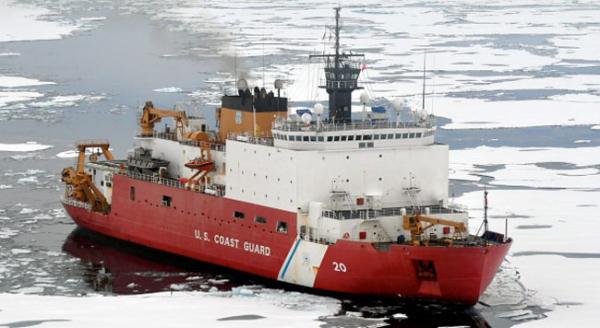NASA to Go Boldly … to the Arctic, Again

NASA scientists are ready to set sail on the second leg of their voyage to study the changing waters of the Arctic Ocean.
On June 25, the ICESCAPE mission (which stands for "Impacts of Climate on Ecosystems and Chemistry of the Arctic Pacific Environment") resumes its investigation of the impacts of climate change in the Chukchi and Beaufort Seas along Alaska's western and northern coasts.
Research teams depart from Dutch Harbor, Alaska, aboard the U.S. Coast Guard Cutter Healy. The mission involves 47 scientists who will spend five weeks exploring parts of the Arctic Ocean that were previously too ice-covered for ships to penetrate.
The first leg was completed during the summer of 2010, and the second year of sampling seeks to find year-to-year differences of the Arctic waters. The data gathered during the mission will also be compared to NASA satellite observations of the Arctic Ocean.
Basis of the food web
Phytoplankton, microscopic organisms that live in watery environments, are a key focus of the campaign. They form the base of the aquatic food web and cycle Earth's carbon between the atmosphere and the ocean. They are also vulnerable to climate change. NASA has monitored changes in phytoplankton from space worldwide with the Aqua satellite and the Sea-viewing Wide Field-of-view Sensor.
"Last year, ICESCAPE nailed down quite a few things in terms of the phytoplankton work," said the mission's chief scientist Kevin Arrigo of Stanford University in Palo Alto, Calif. "We know pretty well now how fast they are growing and what they are responding to. The repeat measurements from this voyage will help us confirm what's going on."
The 2010 ICESCAPE campaign gave researchers a glimpse of what might be happening in Barrow Canyon, one of most productive areas for phytoplankton growth in the Beaufort-Chukchi region. While many blooms last just a few weeks before consuming all of the local nutrients and declining, the bloom in Barrow Canyon gets its start in spring and carries on through summer.
Get the Space.com Newsletter
Breaking space news, the latest updates on rocket launches, skywatching events and more!
Scientists think the extended bloom can be explained by unique patterns in the path and timing of ocean currents in the area. In spring, a stream of water carries nutrients from the Pacific Ocean up through the Bering Strait and delivers them to Barrow Canyon. The water hugs the coast and arrives quickly, providing the nutrients for the bloom to get its start. Two other streams take a more circuitous route and arrive later, sustaining the bloom through summer.
"With this year's voyage, we hope to acquire more details about the physical processes pulling nutrients from deep water to the surface," Arrigo said.
Forging farther north
New to ICESCAPE in 2011, the ship will forge north through the Beaufort Sea to explore the relationship between shallow water on the continental shelf and deep water in the Canada Basin. Phytoplankton on the shallow shelves tend to flourish when the ice retreats and scientists want to find out what feeds the bloom. [Gallery: An Expedition into Iceberg Alley]
Last year, researchers saw some indication that nutrients were moving between deep and shallow water. Wind unexpectedly blew thick, multiyear sea ice south to the edge of the shelf — at some places the ice was up to 20 feet (6 meters) thick. The ice proved too thick for the icebreaker to penetrate. The Healy, the newest and most technologically advanced U.S. polar icebreaker, is designed to break 4.5 feet of ice continuously at a speed of 3 knots.
This year, the field campaign begins two weeks later, which means the Healy is expected to encounter thinner, summer ice and thus have a better chance of exploring the ecosystems in water that spend most of the year under a blanket of ice.
This story was provided by OurAmazingPlanet, a sister site of SPACE.com.
Join our Space Forums to keep talking space on the latest missions, night sky and more! And if you have a news tip, correction or comment, let us know at: community@space.com.
For the science geek in everyone, Live Science breaks down the stories behind the most interesting news and photos on the Internet, while also digging up fascinating discoveries that hit on a broad range of fields, from dinosaurs and archaeology to wacky physics and astronomy to health and human behavior. If you want to learn something interesting every day, Live Science is the place for you.











